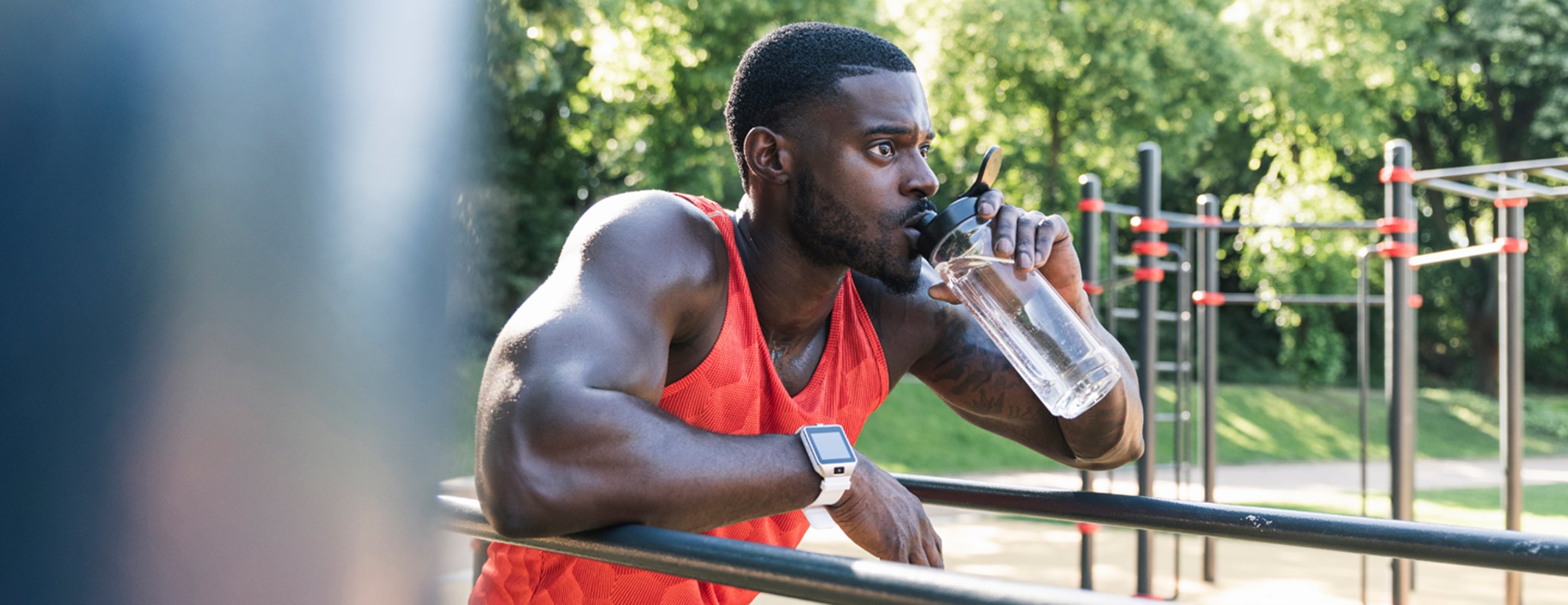
Tips for Safe Summer Training
If you're an athlete, during summer vacation, you may be tempted to slack off from the rigorous training needed to stay in shape. However, last-minute conditioning for fall sports could contribute to serious sports injuries.
Whether you aspire to be a professional athlete or you play sports for fun, follow these tips for safe summer training.
Drink fluids
Remember to drink plenty of water to avoid muscle cramping or heat-related illness. Fluids should be consumed frequently during strenuous activity and within a half hour of training. If you wait until you're thirsty, you're already far behind. It will be difficult to catch up during your conditioning or training. One way to determine if you're drinking enough water is the color of your urine—it should be clear. If it's dark yellow, you're not drinking enough.
Conditions related to a lack of fluids include:
Heat cramps
These are painful, involuntary muscle spasms that usually occur in the muscles being exercised, such as the legs or arms.
Heat exhaustion
Symptoms include a rapid heart rate, low blood pressure, possibly a low-grade fever and hot, red, dry or sweaty skin. People with heat exhaustion may look pale and feel faint or nauseous.
Heat stroke
This is a serious and sometimes fatal condition in which your body is unable to sweat and regulate its temperature. Symptoms include rapid heartbeat, unusually high or low blood pressure, fainting, rapid and shallow breathing, confusion, irritability and loss of consciousness.
Avoid Peak Sun
Avoid rigorous workouts during the peak temperatures of 11 a.m. to 2 p.m. Some athletes think the heat makes them tougher. That's true only if your body is already in top condition. Otherwise, you could be at risk for heat exhaustion or heat stroke.
Warm Up
Even high school athletes need to stretch their muscles before strenuous exercise as a way to prevent muscle injury. Proper stretching lengthens or "loosens" muscle tissue, making it less prone to trauma and tears. Pre-workout warm-ups become more important with age, but they help reduce the risk of injury at any age.
Eat Balanced Meals
Proper nutrition is important to maintaining your body's peak performance. For endurance sports such as football or track, eat plenty of carbohydrates such as bread, cereal and potatoes, which turn into glucose and the energy you'll need.
Pace Yourself
Start slowly if you're not already in shape. Increase your workout regimen gradually, by no more than 10 percent a week.
UCSF Health medical specialists have reviewed this information. It is for educational purposes only and is not intended to replace the advice of your doctor or other health care provider. We encourage you to discuss any questions or concerns you may have with your provider.






